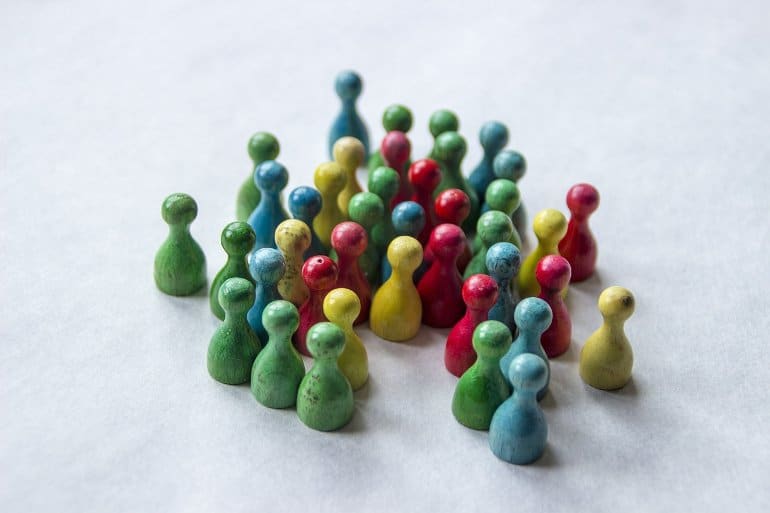Summary: Delving deeper into the phenomenon of social camouflaging could help improve research into autism spectrum disorder.
Source: University of the Basque Country
In recent years there has been a lot of talk about camouflaging in autism. However, research into camouflaging is still relatively very recent, its nature has been barely studied and there are a lot of open questions.
This work therefore aims to present an integrative view of camouflaging. It can be characterised as the set of strategies adopted by the autistic population to fit into the social world.
“Our aim is to understand this phenomenon better and to analyse in depth how camouflaging develops, so that some suggestions can be put forward on how to step up research into it,” said Valentina Petrolini, researcher in the UPV/EHU’s Lindy Lab group and one of the authors of the study.
People normally camouflage themselves with two aims in mind: to hide their diagnosis and to fit in socially.
“We would say that people camouflage themselves when they rehearse conversations they are going to have, when they imitate other people’s gestures and expressions and, in general, when they make an effort to hide their autistic traits,” explained Valentina Petrolini.
“Many studies link the attempt by these individuals to pass themselves off as who they are not with high levels of anxiety and long-term mental problems,” added the UPV/EHU researcher.
How is camouflaging detected in the autistic population? Tools, such as tests and questionnaires currently exist, but they overlook a high proportion of people in the spectrum, such as people who unconsciously camouflage themselves, people with intellectual and/or linguistic disabilities, etc.
In this work, “we are proposing that information be triangulated by using existing evidence, gathering information from the environment, observing a person’s behaviour in different contexts and talking to people in different contexts… in other words, by observing the phenomenon of camouflaging without directly asking the person involved,” said Valentina Petrolini.
Extending the study of camouflaging to groups that are currently overlooked also has significant implications in terms of impact. That is why this study extends the discussion on camouflaging to currently little studied groups on the autism spectrum, i.e. children and adults with linguistic and/or intellectual disabilities.

“We argue that camouflaging in these groups may differ from what the current literature describes as typical cases of camouflaging,” said Valentina Petrolini.
“One of the points that emerges from our study,” Petrolini went on, “is that camouflaging may emerge differently, and exert a different impact, depending on the people who do it”.
This purely theoretical work concludes that “the basis of much of the research conducted so far is limited to the characterisation and representativeness of the participants, suggesting that the findings cannot be applied to the autistic community as a whole”, said Valentina Petrolini.
The work also highlights the need to explore the phenomenon of autism in greater depth and to develop measuring tools that are more accurate and inclusive than the current ones.
“We could even go as far as to say that it is a call to action so that generalized conclusions are not drawn without having an accurate picture of the situation,” said the UPV/EHU’s Lindy Lab research group.
About this social neuroscience and autism research news
Author: Matxalen Sotillo
Source: University of the Basque Country
Contact: Matxalen Sotillo – University of the Basque Country
Image: The image is in the public domain
Original Research: Open access.
“Autistic camouflaging across the spectrum” by Valentina Petrolini et al. New Ideas in Psychology
Abstract
Autistic camouflaging across the spectrum
Camouflaging may be characterized as a set of actions and strategies more or less consciously adopted by some autistic people to navigate the neurotypical social world. Despite the increased interest that this phenomenon has garnered, its nature remains elusive and in need of conceptual clarification.
In this paper, we aim to put forward an inclusive view of camouflaging that does justice to its complexity while also reflecting the heterogeneity of autism as a condition.
First, we offer an overview of the main characterizations of camouflaging. This overview shows that current characterizations fail to paint a cohesive picture, and that different accounts emphasize different aspects of the phenomenon.
Second, we explore the analogy between camouflaging and passing, which we take to be illuminating to describe some forms of camouflaging, while probably obscuring the study of others.
Third, we extend the discussion about camouflaging to currently understudied groups across the autistic spectrum – i.e., children, and adults with linguistic and/or intellectual disabilities.
We argue that camouflaging in such groups may differ from what the current literature describes as typical instances of camouflaging.
We conclude by revisiting the nature of camouflaging in light of such understudied groups, and we offer some suggestions on how to move research forward.







